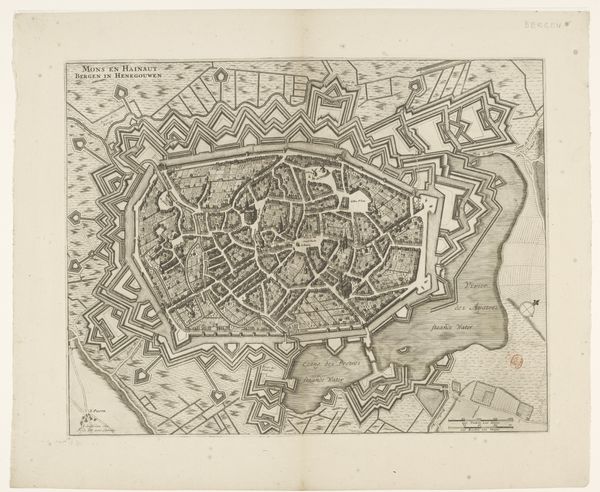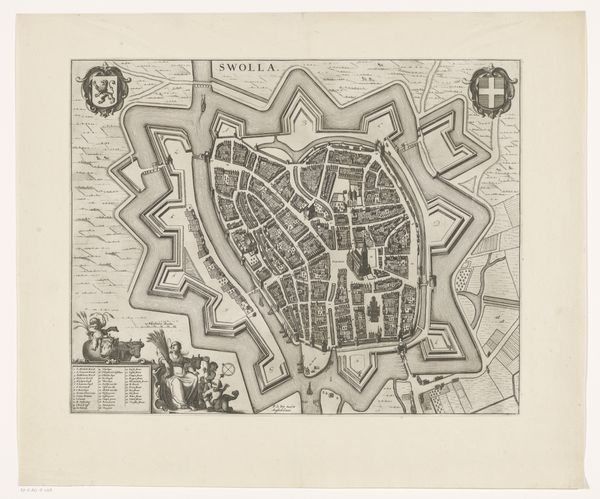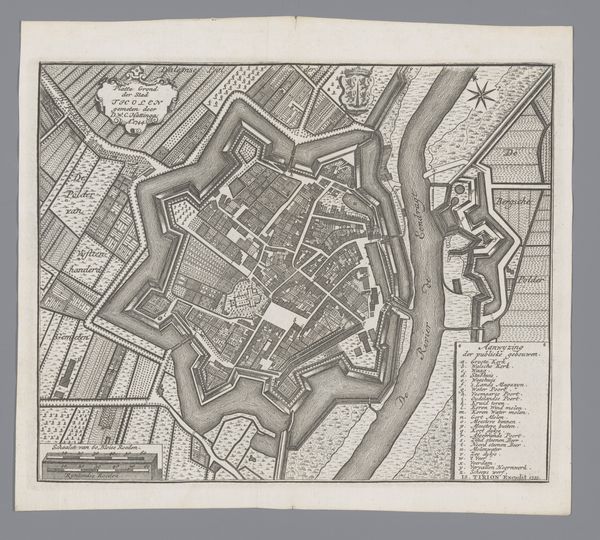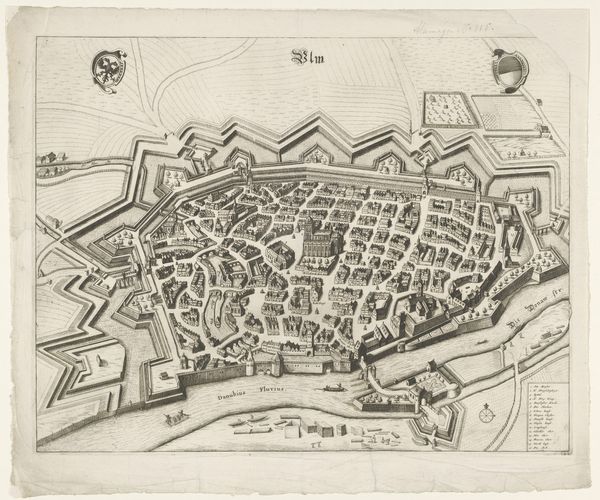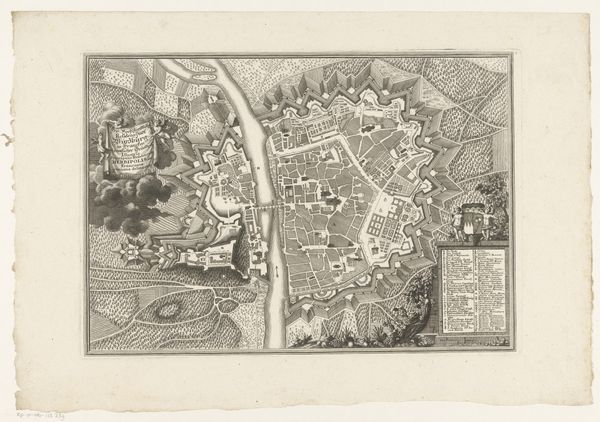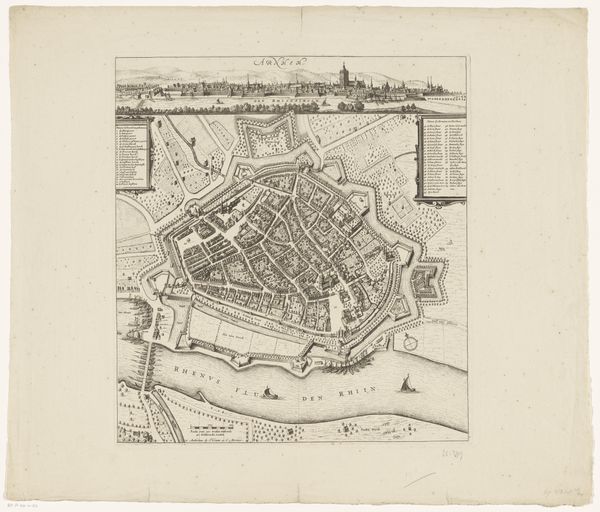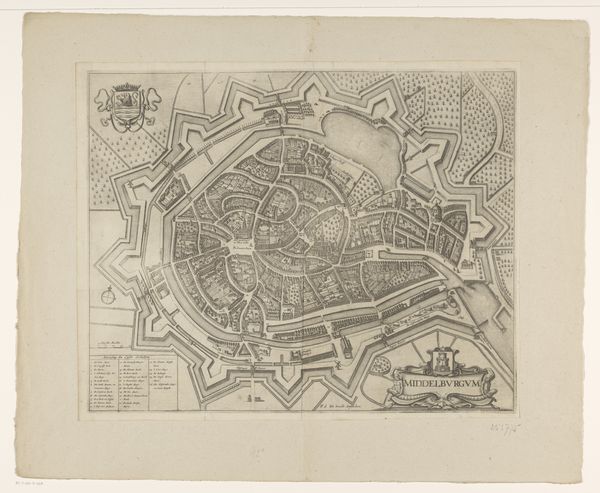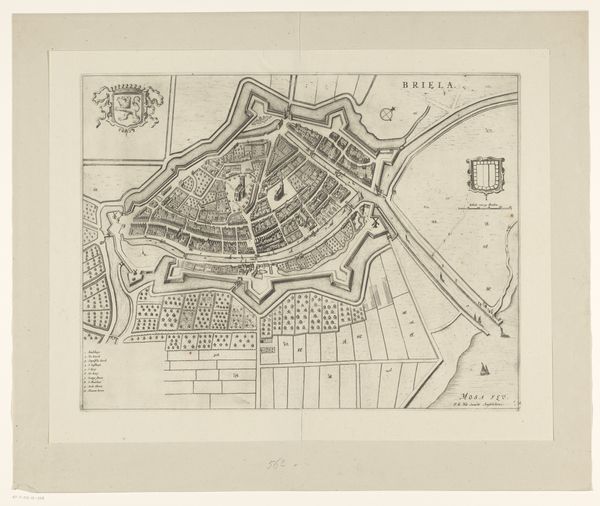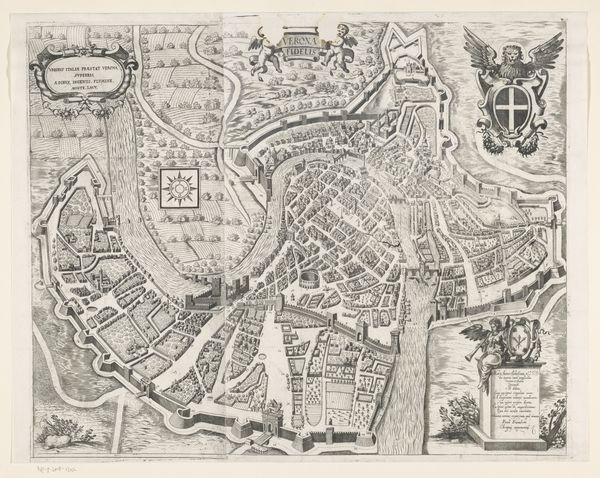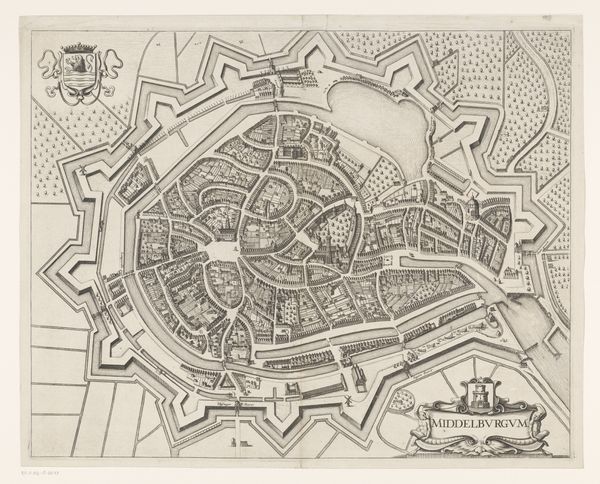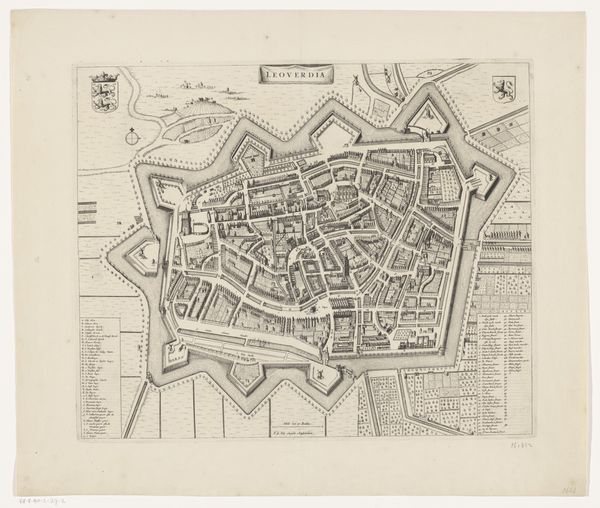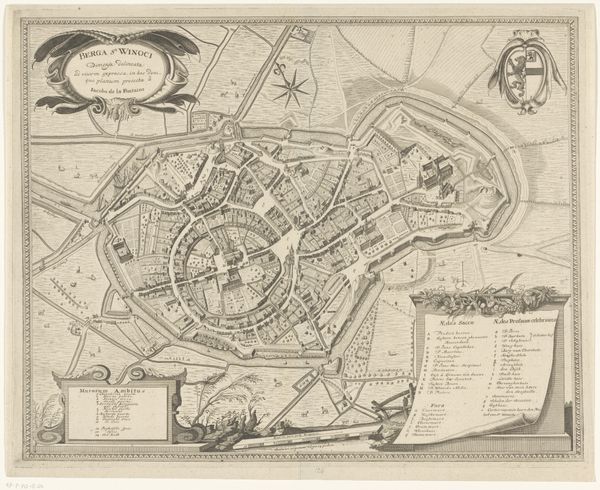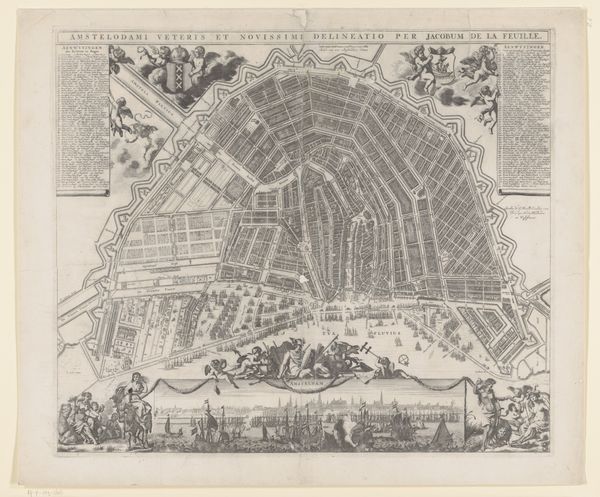
print, engraving
#
baroque
# print
#
geometric
#
cityscape
#
engraving
Dimensions: height 463 mm, width 538 mm
Copyright: Rijks Museum: Open Domain
Curator: Look at the intricate detail! We're examining "Plattegrond van Middelburg," a cityscape rendered in engraving between 1690 and 1717 by an anonymous artist. Editor: My first impression is a feeling of precision and control, almost sterile. The geometric forms, the order—it evokes the rigid structure of baroque power. Curator: Exactly. The engraving process itself demands meticulous planning. The labor involved in creating such fine lines, the consumption of resources like metal plates and inks—it’s a testament to specialized craftmanship. How does this level of representation impact the community illustrated here? Editor: The grid layout reminds us of urban planning’s role in social control. Who benefits from this clear representation? The military, merchants...the colonizers maybe more than the colonized. We see that control represented materially. Curator: Indeed, those massive walls enclosing the city and forming its distinctive star shape speak of defense, power, and resource expenditure. It's fascinating how an engraving facilitates both artistic expression and pragmatic city planning. The act of printing these for consumption further displays how information can both limit and liberate simultaneously. Editor: Absolutely, the accessibility afforded by printed images, specifically to the governing classes, plays directly into socio-economic advantages during the Baroque. These precise lines belie lived experiences inside those walls. It makes me think about the social fabric, the invisible networks of trade and personal relationships that a map, for all its clarity, cannot reveal. Who were the cartographers? From what social position was this representation drafted? What biases do we discover upon reflection? Curator: Those unrecoverable individual experiences behind grand representation are where we discover the core essence of the artistic enterprise as a function of cultural production and political agenda. The social forces at play as both the topic and the genesis of artistic intent should urge to interrogate this map through alternative lenses and viewpoints. Editor: The engraving presents an idealized version of the city that ignores daily life for the less powerful and reveals instead the consolidation of power during a violent era of history. These absences urge me to reflect on silenced voices in the face of history-altering circumstances. Curator: Thank you, I could have looked at the geometric exactitude for days but framing within social structures provides an even greater picture for me. Editor: Likewise, without looking closely at craftmanship and modes of dissemination I would have missed seeing those important components that helped in constructing baroque cultural domination.
Comments
No comments
Be the first to comment and join the conversation on the ultimate creative platform.
